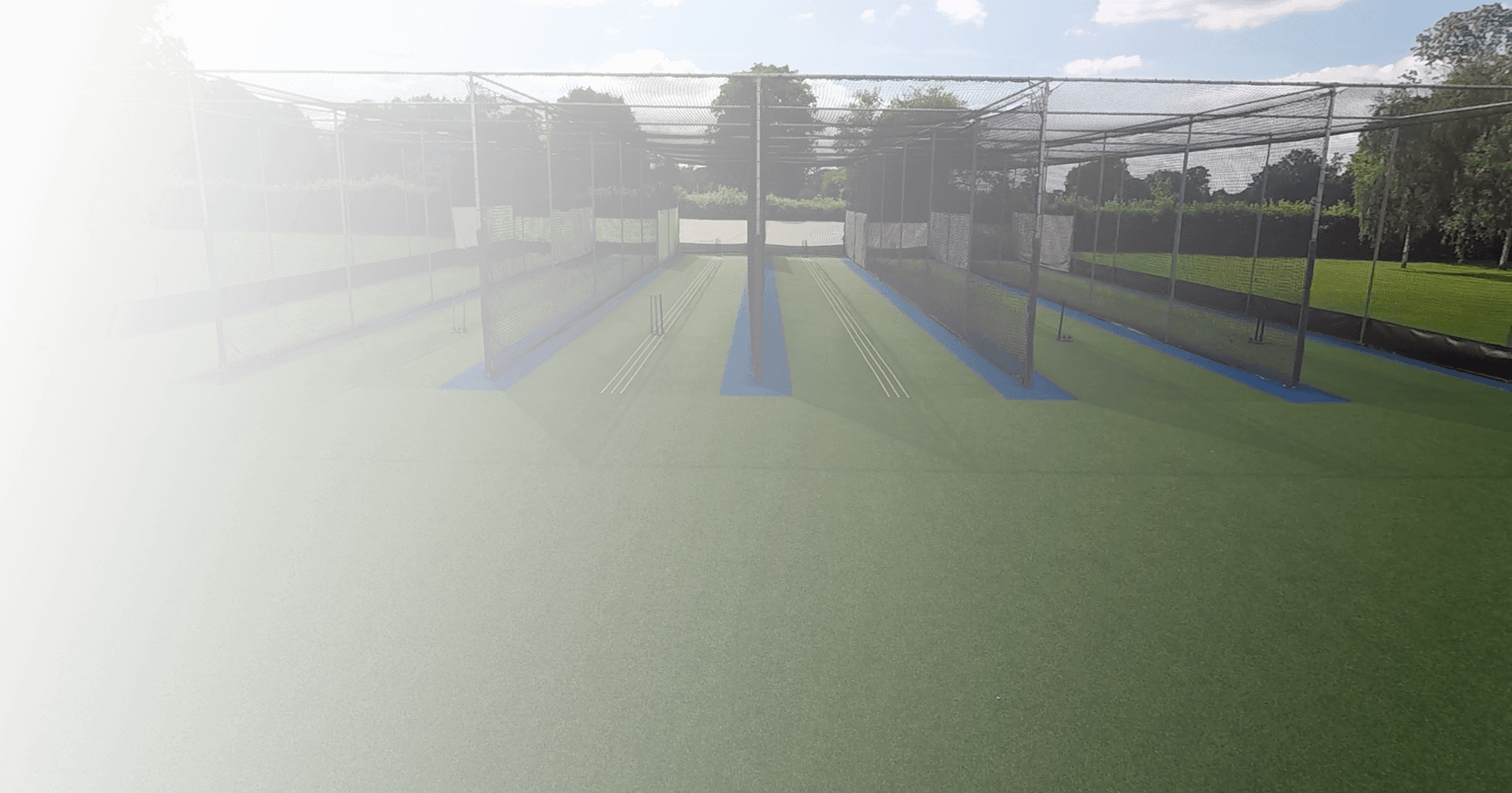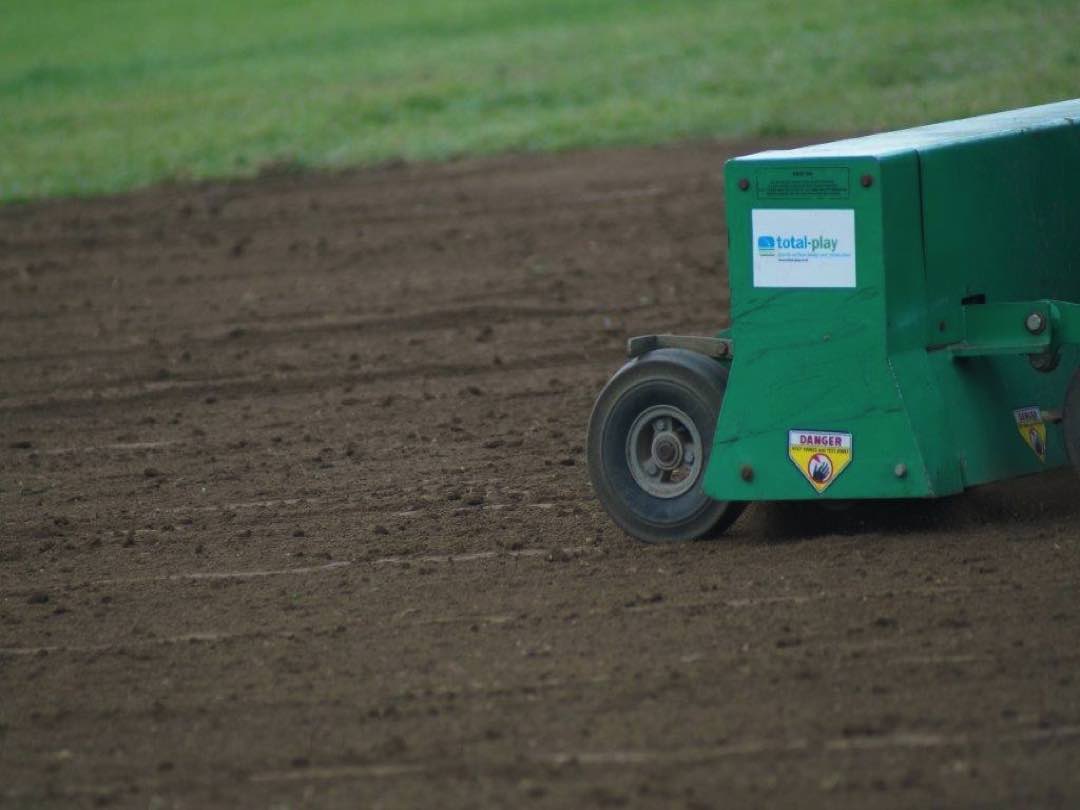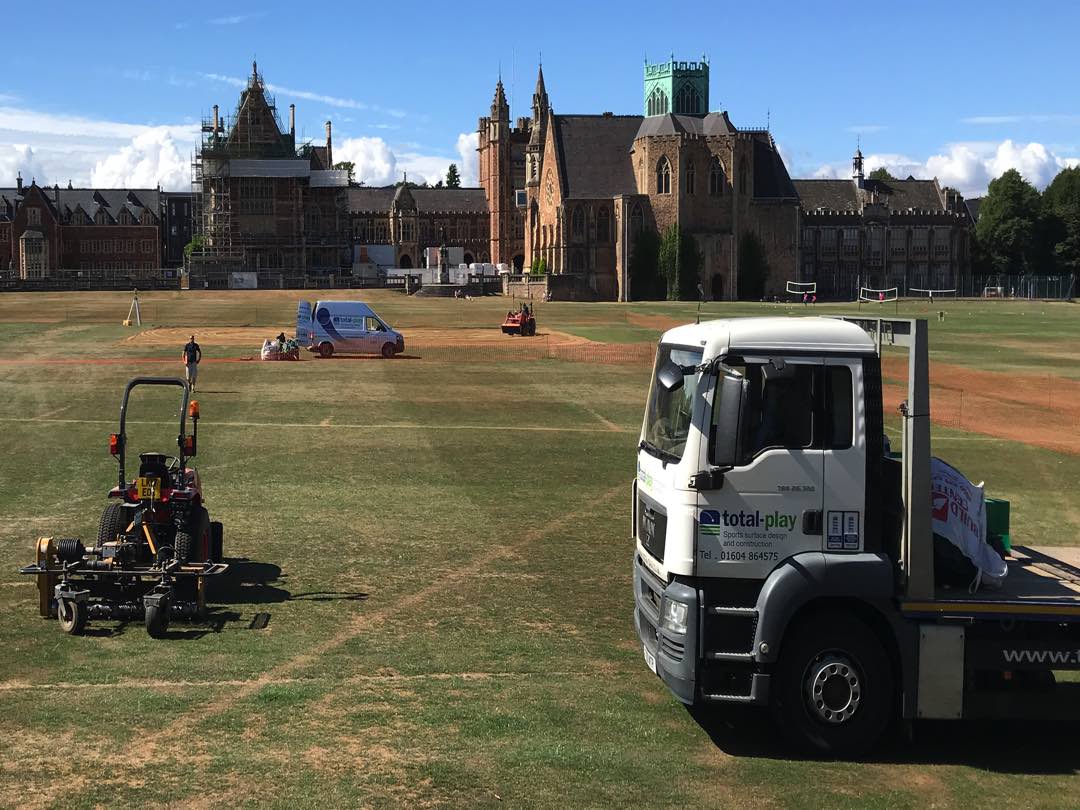Pitch Construction Processes
Natural Works | Pitch Construction | Full Pitch | Profile | Regeneration

As a former first-class groundsman, Chairman of the First-Class Groundsman Committee, trainer and pitch advisor for the IoG, total-play’s MD David Bates knows a thing or two about natural cricket pitch preparation and maintenance. Here, he shares his approach to cricket pitch regeneration.
“Over the years, I’ve worked on hundreds of natural turf cricket pitches, ranging from village grounds to first-class and International venues. When surveying these pitches, assessing their fitness for purpose and making recommendations for works to remedy critical issues, I’ve always mulled over how to best explain, in simple terms, the options for cricket pitch works to the club man and groundsman.
A few years ago, I sat down and did exactly that; creating a document that defines works into four key categories – or processes.
The processes range in scope from the regular end-of-season works for natural turf cricket tables to the construction of a new cricket table to remedy even the most severe of problem pitches.” David Bates – Total Play LTD.
In this section will look at two of the four options: Table – Pitch Construction (Full Pitch and Profile) and Profile Regeneration.
Construction of a cricket table is completed when a new ground is being built, or an existing playing surface cannot be brought back to the required standard by any other means.
New squares are designed and built in two ways:
A ‘full construction‘ design incorporates a gravel raft, binding layer and loam. A typical profile depth would range between 400-450 mm. The gravel raft is used to create stability, with an angular primary stone used to support the loam profile and reduce the risk of settlement. In some cases, a gravel raft can also help drainage when used in connection with a perimeter ring drain.
A ‘profile construction‘ design uses only imported loam directly on the site’s existing soil base, with a typical profile depth ranging between 100-250 mm.
Whichever construction method is decided upon, the use of laser-guided machinery is recommended. Modern laser-guided machinery performs better than traditional methods, i.e. compaction rates, surface gradients, surface levels, and material quantities.




The process of ‘profile regeneration‘ and ‘profile recycling’ has been designed to bridge the gap between surface works and pitch construction. It is a hybrid of the two and should be viewed as ‘going a stage further’ than the ‘Square Restoration’ process.
Where conditions allow, profile regeneration is a cost-effective alternative to construction as it can solve many of the same issues, such as severe issues with levels and profile layering. It is, however, restricted to a depth of 80-100 mm. Regeneration also results in an immediate improvement in performance and will enable the square to be used the following season, thus avoiding the delays often associated with construction works.
In ‘profile recycling‘, rather than importing and exporting materials, on-site soils are utilised. Organic matter is removed from the surface, and the existing underlying soil is cultivated. The process is purely dependent on on-site soil types and depths and employs machinery used in both construction and restoration, thus requiring a high level of understanding by the contractor.
As cultivation machinery can break up the existing profile layers, organic matter and various loams, laser-guided machinery is recommended as it can simultaneously agitate and grade to exact depths minimising the cultivated layer before being employed to grade and consolidate a new surface. In addition, the cultivation of the on-site material also aids soil amelioration and overseeding.
Surface regeneration works, including profile recycling, can be a cost-effective solution to breathe new life into old squares, creating the equivalent of a newly constructed table.









